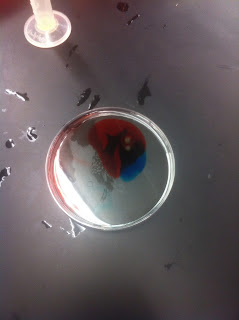Basic Chemistry
During our second class, we review few basic chemistry
topics, such as elements, compounds, and bonds between atoms.
Atomic number = # of protons = number of electrons
Atomic mass number = protons + neutrons
Atomic mass number – Atomic number = neutrons
Elements VS Compounds:
1. Elements: Elements are substances that cannot be
separated into simpler substance.
2. Compounds: A compound is a substance formed when two or
more elements are chemically joined.
Compound VS Molecule
1 A molecule consists of two more atoms, which
can be the same or different types of atom, that are linked by a chemical bond.
A molecule of H2 or O2 is still a molecule, but not a compound.
2. A compound is usually a molecule as well. To
be a compound, it has to have two different types of atoms, such as H2O.
3. Some compounds like NaCl are not molecules
because they are linked together in a crystalline structure, rather than being
molecularly bonded.
Isotope:
Isotope: one of two or more atoms with the same
atomic number but with different numbers of neutrons. Some isotopes are very
useful in the field of chemistry and biology. One example would be radiation.
Radiation from certain isotopes can be used to detect and treat cancer while
also kill bacteria.
Nonpolar covalent VS Polar covalent VS Ionic
bonds.
1. A nonpolar covalent bond is a bond where
electrons are shared equally between two atoms.
2. A polar covalent bond is a chemical bond
where the shared electrons spend more time closer to the nucleus of the more
electronegative atom.
3. In an ionic bond, the electrons are
completely transferred from one atom to another rather than shared.




